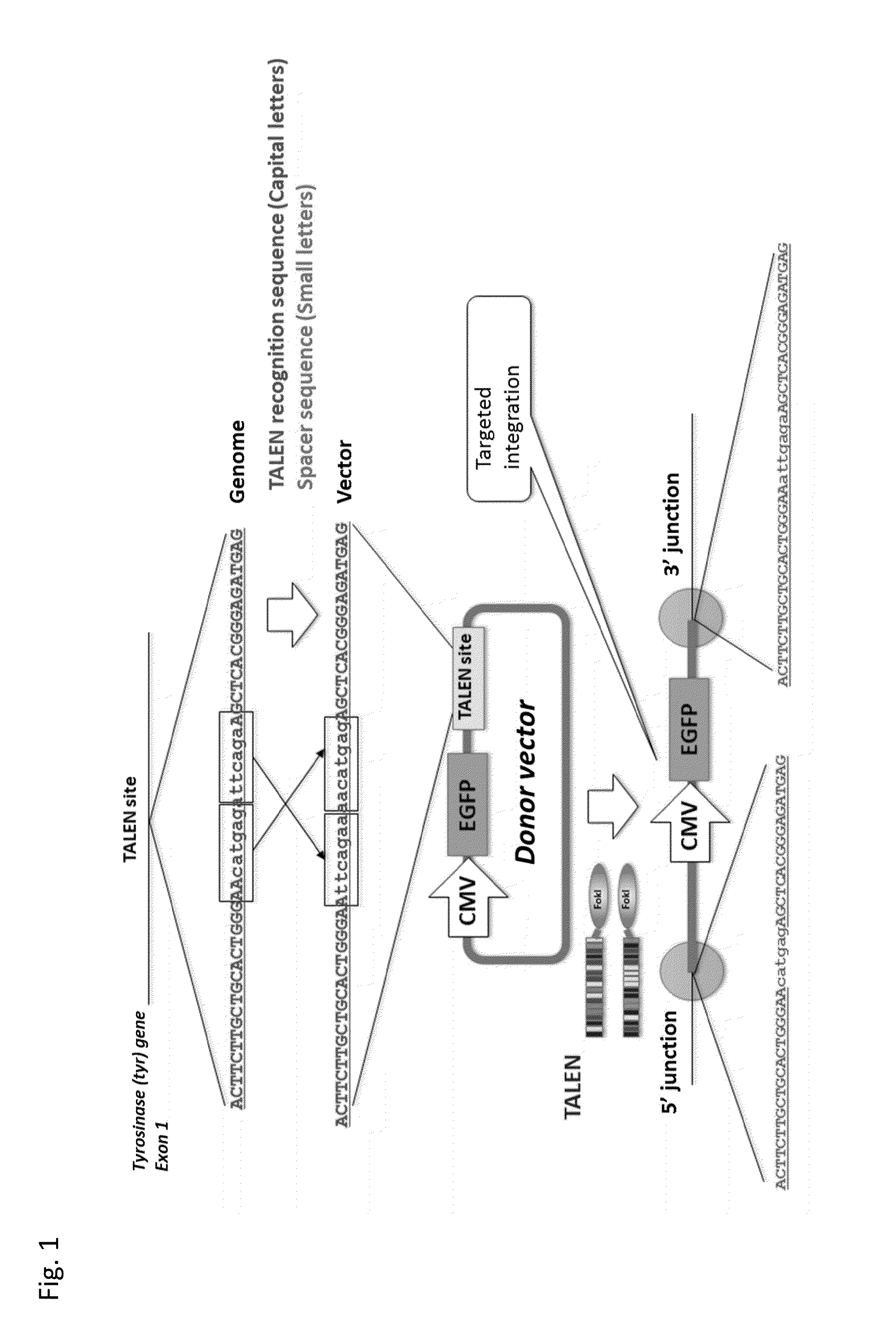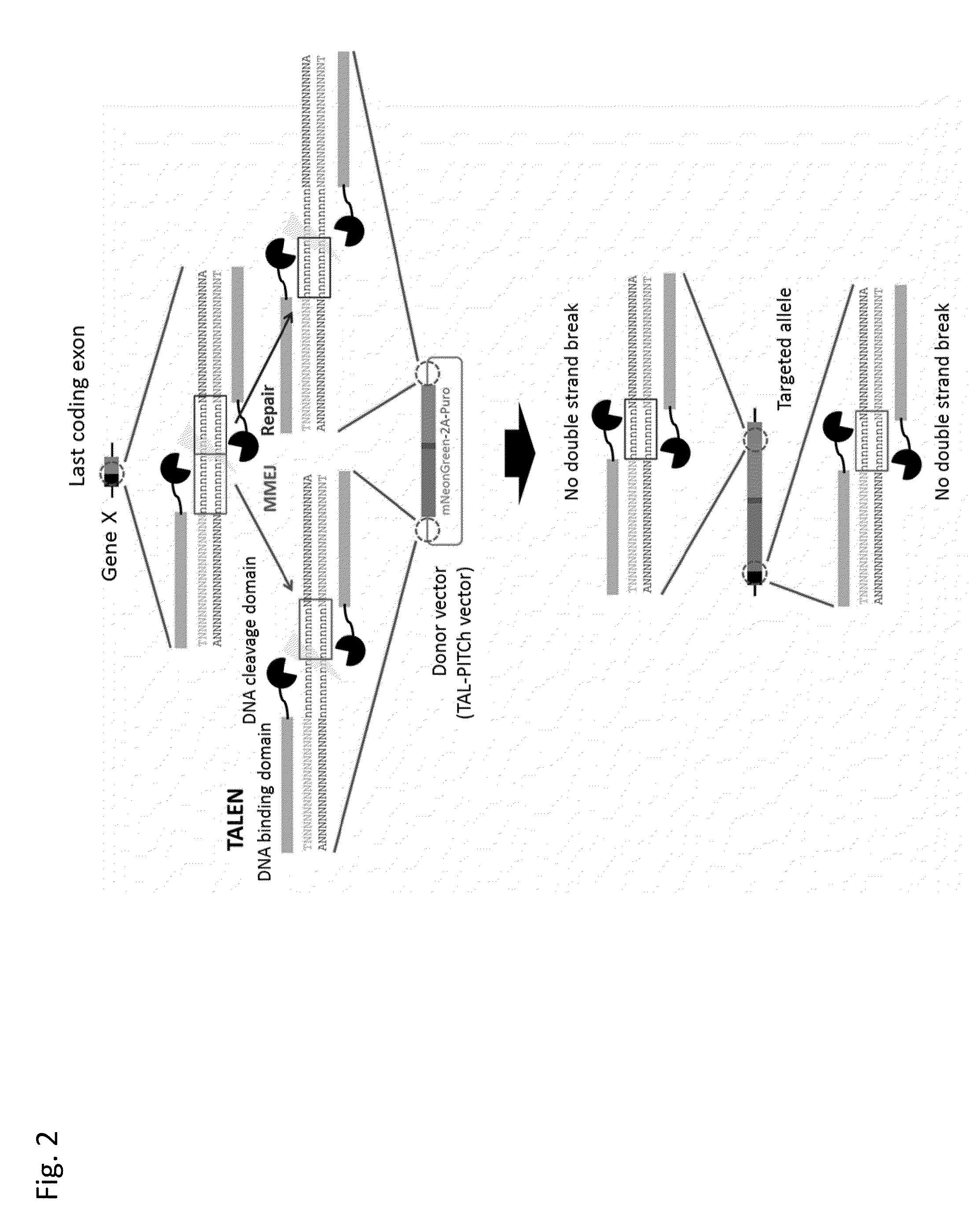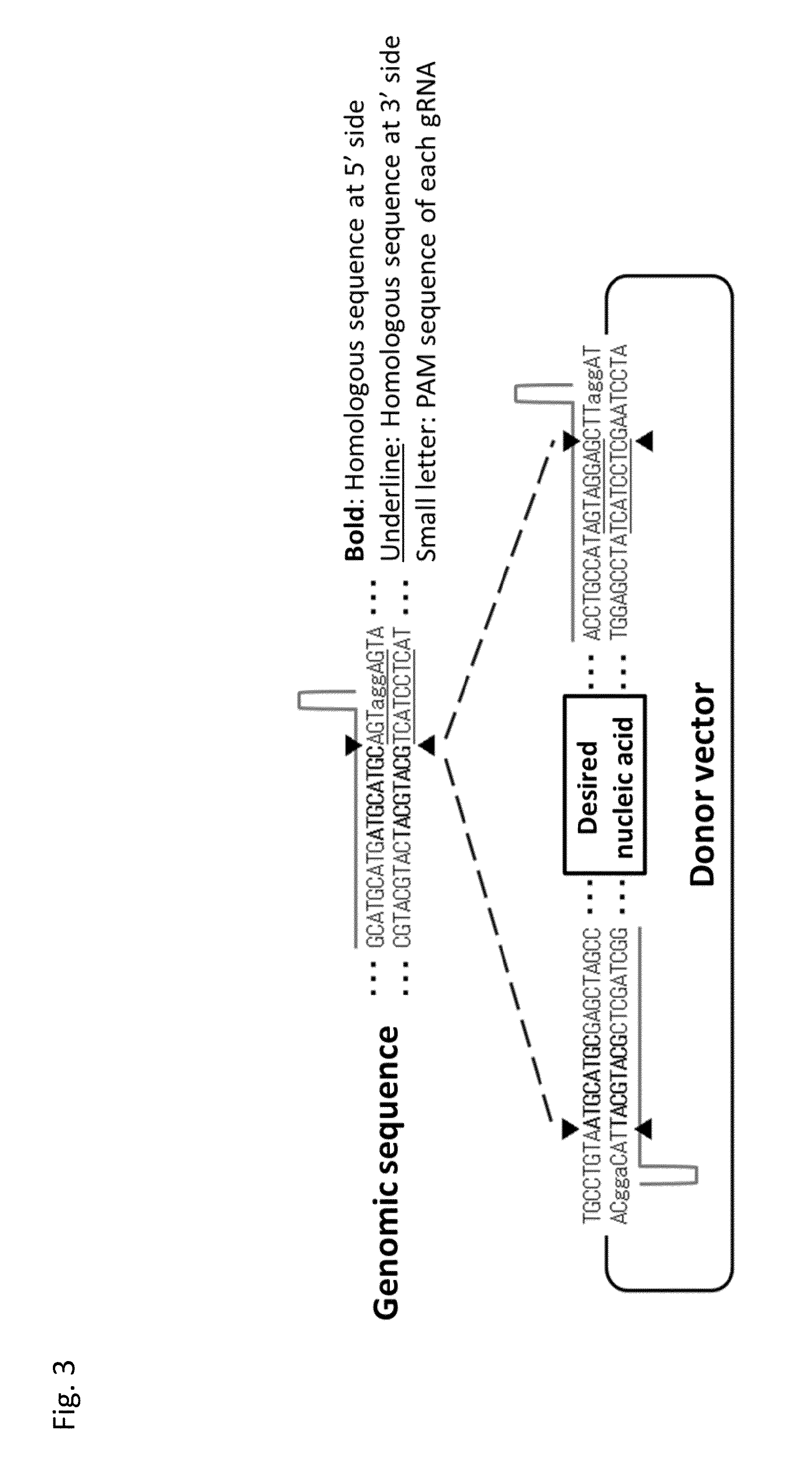Vector for Nucleic Acid Insertion
a nucleic acid insertion and nucleus technology, applied in the field of vectors for nucleic acid insertion, can solve the problems of long stranded homologous recombination, low homologous recombination efficiency, and limited cell and organism methods, so as to achieve accurate and easy insertion, high nuclease activity, and accurate design of junctions
- Summary
- Abstract
- Description
- Claims
- Application Information
AI Technical Summary
Benefits of technology
Problems solved by technology
Method used
Image
Examples
example 1
Target Integration with TALEN
[0090]In this example, an expression cassette of a fluorescent protein gene was introduced (target integration) into Exon1 of a tyrosinase (tyr) gene of Xenopus laevis using the TALEN and the donor vector (TAL-PITCh vector).
1-1. Construction of TALEN:
[0091]The TALEN plasmid was constructed in the following manner. A vector constructed by In-Fusion cloning (Clontech Laboratories, Inc.) using pFUS_B6 vector (Addgene) as a template was mixed with a plasmid having a single DNA binding domain. By a Golden Gate reaction, 4 DNA binding domains were linked together (STEP1 plasmid). Thereafter, a vector constructed by In-Fusion cloning (Clontech Laboratories, Inc.) using pcDNA-TAL-NC2 vector (Addgene) as a template was mixed with the STEP1 plasmid. A TALEN plasmid was obtained by the second Golden Gate reaction. The full length sequence of the plasmid is shown in SEQ ID NOs: 1 and 2 (Left_TALEN) and SEQ ID NOs: 3 and 4 (Right_TALEN) of the Sequence Listing.
1-2. C...
example 2
Target Integration into HEK293T Cell Using CRISPR / Cas9 System
[0098]In this example, a fluorescent protein gene expression cassette was introduced (target integration) into the last coding exon of fibrillarin (FBL) gene in a HEK293T cell using the CRISPR / Cas9 system. The outline of this example is illustrated in FIG. 10. Briefly, the vector expressing three types of gRNAs indicated in orange, red and green in FIG. 10 and Cas9 and the donor vector (CRIS-PITCh vector) were co-introduced into the HEK293T cell and the resulting cell was selected by puromycin. Thereafter, DNA sequencing and fluorescent observation were carried out.
2-1. Construction of Vector Expressing gRNA and Cas9:
[0099]A vector simultaneously expressing three types of gRNAs, and Cas9 was constructed as described in SCIENTIFIC REPORTS 2014 Jun. 23; 4: 5400. doi: 10.1038 / srep05400. Briefly, the pX330 vector (Addgene; Plasmid 42230) was modified so that a plurality of gRNA expression cassettes could be linked by a Golden ...
PUM
| Property | Measurement | Unit |
|---|---|---|
| length | aaaaa | aaaaa |
| size | aaaaa | aaaaa |
| frequency | aaaaa | aaaaa |
Abstract
Description
Claims
Application Information
 Login to View More
Login to View More - R&D
- Intellectual Property
- Life Sciences
- Materials
- Tech Scout
- Unparalleled Data Quality
- Higher Quality Content
- 60% Fewer Hallucinations
Browse by: Latest US Patents, China's latest patents, Technical Efficacy Thesaurus, Application Domain, Technology Topic, Popular Technical Reports.
© 2025 PatSnap. All rights reserved.Legal|Privacy policy|Modern Slavery Act Transparency Statement|Sitemap|About US| Contact US: help@patsnap.com



